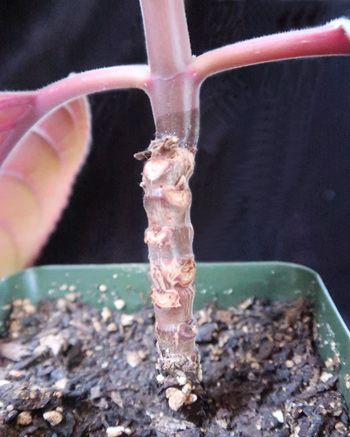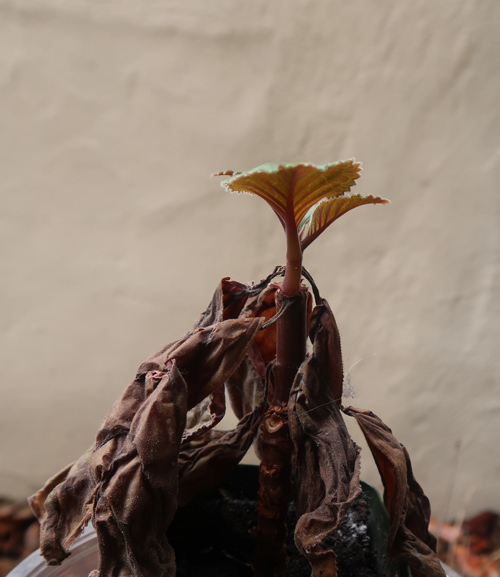Sinningia helleri: One Year To The Next

When this species comes to the end of its growth in the autumn or winter, it is very tempting to cut it back at a point near the base, since by that time it will usually have developed a bare stem with a tuft of leaves at the top. This may be a mistake.
More than one grower has noticed that plants cut back in this way may not resprout in the spring. The growth habit of this species somewhat resembles that of Sinningia gigantifolia, to which is is related, both species being in the Sinningia clade. The two species resume growth from a point at the top of the stem or near it. Removing that point may leave the plant with no tissue from which to grow further.
Restarting the plant from seed is the best option for getting a more compact plant. Another possible idea is rerooting the top of the plant after it is removed.
I speculate that this inability or at least unwillingness to put out new growth from the base of a stem might be one reason why this species was lost to cultivation a century ago.
Growers may have cut the stem back to the tuber, as was the practice for many sinningias, both to conserve space and to give the plant a fresh start in the spring. The result might instead have been loss of the plant.
The pictures below may show the natural rejuvenation behavior of this species.

